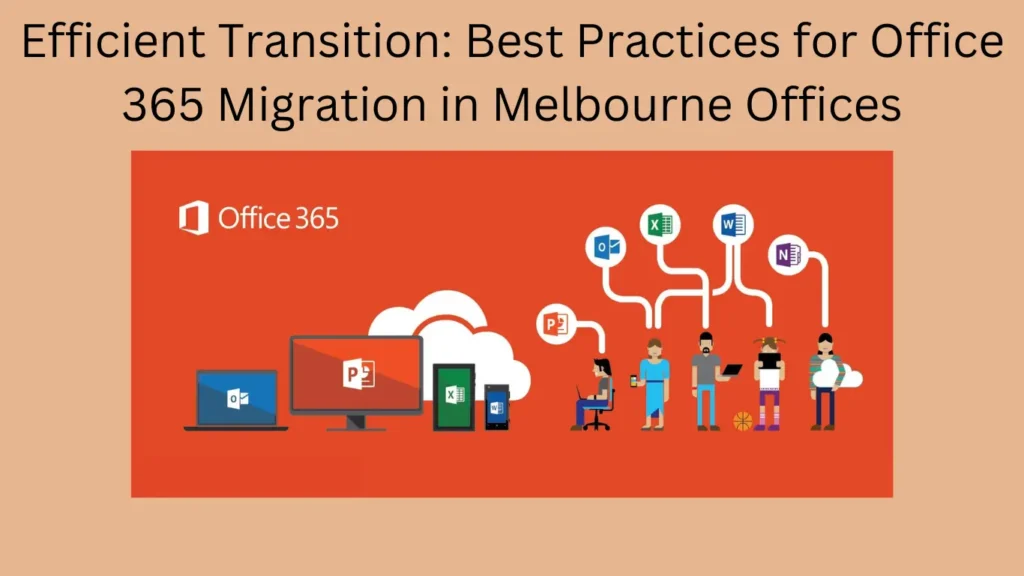Migrating to Office 365 can revolutionize the way your office operates, enhancing collaboration, productivity, and security. Here are the best practices for ensuring a seamless Office 365 migration for Melbourne offices, focusing on creating helpful, reliable, people-first content.
1. Assess Your Current Environment
Before starting the migration, conduct a thorough assessment of your current IT environment. Identify the existing software, hardware, and network infrastructure. Take note of the following:
- Email Systems: Current email platforms and configurations.
- User Data: Volume and types of data to be migrated.
- Licenses and Subscriptions: Existing Office licenses and potential needs.
2. Plan Your Migration Strategy
A well-thought-out strategy is crucial for a successful migration. Consider the following steps:
- Set Clear Objectives: Define the goals of the migration, such as improved collaboration, enhanced security, or cost savings.
- Create a Timeline: Develop a detailed timeline with key milestones and deadlines.
- Allocate Resources: Assign roles and responsibilities to your IT team or consider hiring a migration specialist.
3. Choose the Right Migration Tools
Selecting the appropriate migration tools can streamline the process. Microsoft offers several built-in tools, such as:
- Microsoft FastTrack: Provides step-by-step guidance for migration.
- Exchange Admin Center (EAC): Ideal for smaller migrations.
- Azure AD Connect: Facilitates directory synchronization and single sign-on.
4. Pilot Testing
This helps identify potential issues and allows you to make necessary adjustments. During the pilot phase:
- Test Functionality: Ensure all features and integrations work as expected.
- Gather Feedback: Collect feedback from pilot users to understand their experience and address any concerns.
5. Communication and Training
Effective communication and training are key to ensuring a smooth transition. Keep your team informed about the migration process and provide adequate training on Office 365 features. Consider the following:
- Regular Updates: Send regular updates on the migration progress and what to expect.
- Training Sessions: Organize training sessions or webinars to familiarize users with new tools and features.
- Support Resources: Provide access to support resources, such as user guides and helpdesk contacts.
6. Execute the Migration
With the planning and preparation complete, it’s time to execute the migration. Follow these steps:
- Data Migration: Migrate emails, files, and other critical data to Office 365.
- User Setup: Configure user accounts and permissions.
- Application Integration: Ensure all third-party applications are integrated and functioning correctly.
- Testing and Validation: Perform thorough testing to validate the migration’s success and resolve any issues.
Conclusion
By following these best practices, Melbourne offices can ensure a smooth and efficient transition. Remember, the key to a successful migration is thorough planning, effective communication, and ongoing support. Embrace the change and unlock the full potential of Office 365 for your organization.
For further Inquires Contact Us
FAQs
What is Office 365 migration?
Answer: Office 365 migration involves transferring your organization’s email, data, and applications from existing systems to Microsoft’s Office 365 cloud platform, enhancing collaboration and productivity.
Why should Melbourne offices consider migrating to Office 365?
Answer: Migrating to Office 365 offers numerous benefits, including improved collaboration, enhanced security, access to the latest tools, and cost savings, making it ideal for modern office environments.
What are the key steps in planning an Office 365 migration?
Answer: Key steps include assessing your current environment, creating a migration strategy, choosing the right tools, conducting pilot testing, and communicating with and training users.
How can we ensure data security during the migration process?
Answer: Ensure data security by backing up critical data before migration, using reliable migration tools, and continuously monitoring the system for any security issues during and after the migration.
What support is available post-migration?
Answer: Post-migration support includes monitoring system performance, providing user feedback channels, regular updates, and access to helpdesk services to address any issues that arise.

